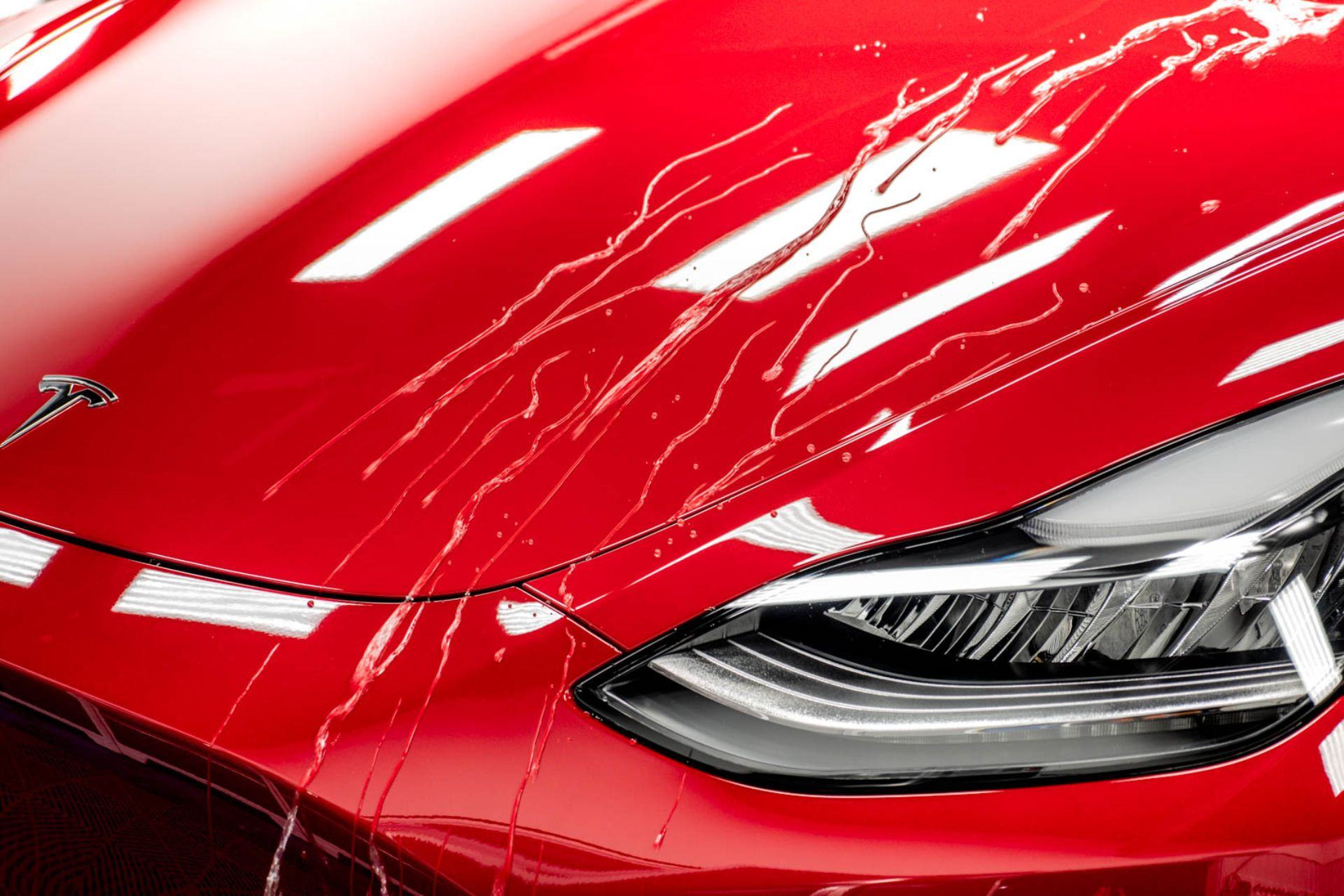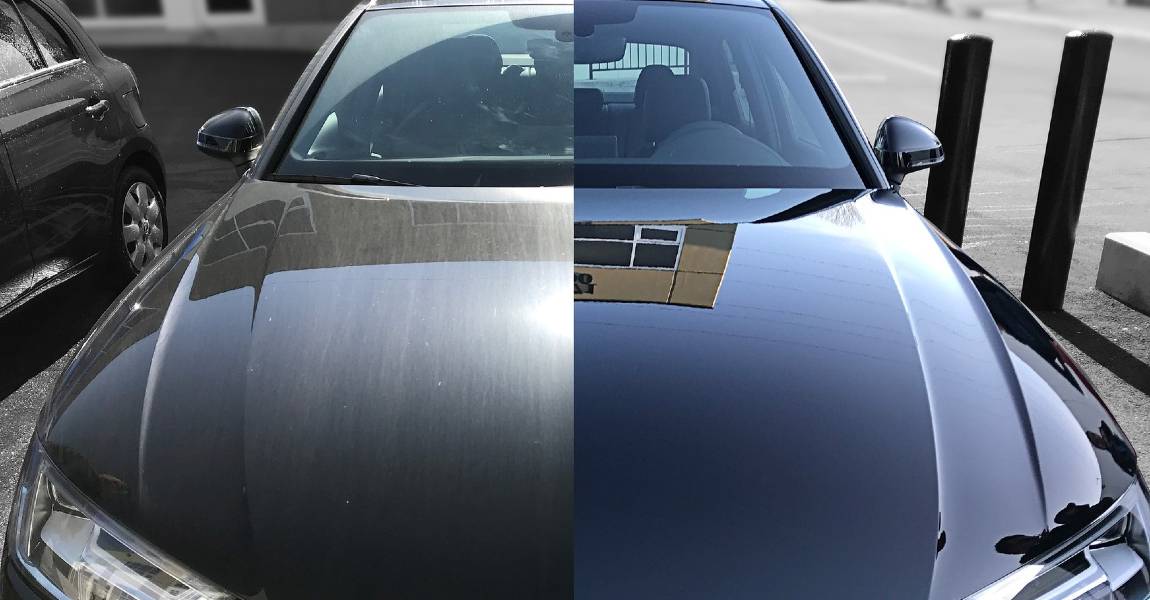A Comprehensive Overview to the Sorts Of Ceramic Finishing on the Market
Ceramic finishes have actually emerged as a pivotal remedy throughout numerous markets due to their distinct properties and applications. As we check out the distinctive qualities and applications of these finishings, the ramifications for performance and durability come to be significantly apparent, raising inquiries regarding which type may finest match your demands.
Comprehending Ceramic Coatings
Ceramic finishes are innovative protective remedies that have actually acquired appeal in different markets, particularly in automotive and aerospace applications. These finishings include a liquid polymer that, when healed, forms a resilient, hydrophobic layer on the surface of the substratum. This layer gives improved resistance to environmental pollutants, UV radiation, and chemical exposure, thereby extending the life and visual allure of the underlying material.
The essential component of ceramic coatings is silica, which adds to their solidity and sturdiness. The application process usually entails surface area prep work, application of the covering, and curing, which can be accomplished with warmth or UV light. Once healed, ceramic coatings show exceptional bonding homes, enabling them to stick highly to a variety of surfaces, consisting of steels, plastics, and glass.
In enhancement to their protective functions, ceramic layers likewise offer convenience of upkeep. Their hydrophobic nature reduces the adherence of dust and gunk, making cleaning easier and much less frequent. In general, the adoption of ceramic coverings stands for a substantial advancement in surface security innovation, giving both practical and visual benefits throughout numerous fields.
Types of Ceramic Coatings
Different sorts of ceramic finishes are available, each developed to satisfy specific performance needs and applications - Paint Protection Film. The most usual kinds consist of:
Silica-based Coatings: These layers largely consist of silicon dioxide and are recognized for their resilience and chemical resistance. They are extensively used in automotive and industrial applications.
Titanium Dioxide Coatings: Distinguished for their photocatalytic properties, titanium dioxide coverings are typically used in settings where self-cleaning and antifungal residential properties are desirable, such as in structure products and automobile surfaces.
Zirconia Coatings: Characterized by their high-temperature stability and thermal resistance, zirconia layers are used in applications such as generator engines and high-performance auto parts.
Alumina Coatings: Exhibiting outstanding firmness and thermal stability, alumina coverings are frequently made use of in wear-resistant applications, including reducing tools and industrial machinery. - Paint Protection Film
Crossbreed Coatings: Integrating the residential properties of numerous products, hybrid coatings supply boosted efficiency attributes, making them ideal for distinct and requiring applications.
Each kind of ceramic covering offers distinctive functions, permitting users to pick one of the most ideal service based upon details ecological problems and efficiency needs.
Benefits of Ceramic Coatings
Ceramic finishes, in specific, deal various benefits that make them progressively popular amongst makers and consumers alike. These coverings are immune to scratches, chemicals, and UV rays, making sure that the underlying surface continues to be protected over time.
Along with resilience, ceramic coatings give outstanding hydrophobic properties, enabling for very easy cleaning and upkeep. This water-repellent nature minimizes the adherence of dust, grime, and other pollutants, which can extend the aesthetic charm and capability of the surface area. In addition, ceramic coatings can substantially improve thermal resistance, making them ideal for applications that withstand high temperature levels.

Application Process
When applying ceramic layers, a careful method is necessary to achieve optimum results. The application process normally begins with thorough surface area preparation. This entails washing, decontaminating, and brightening the surface area to remove all impurities, consisting of dust, oil, and prior waxes or sealers. A clean surface area makes certain proper bond of the finish.
Once the surface is prepped, the next step is to apply the ceramic finish. The layer should be applied in thin layers, as thicker applications can lead to unequal surfaces.
After application, the layer needs a particular curing time, typically varying from a couple of hours to a full day, depending on the item. Adhering to these actions vigilantly will make the most of the effectiveness and long life of the ceramic finish, offering a durable safety layer for anonymous the surface area.
Maintenance and Long Life
To make sure the longevity and efficiency of a ceramic covering, regular upkeep is crucial. Ceramic layers, recognized for their toughness and safety high qualities, need particular care regimens to optimize their life-span and efficiency.
Along with routine cleaning, routine inspections are vital. Seek signs of wear or damages, such as hydrophobic residential properties diminishing or surface flaws. If required, a light gloss may be related to revitalize the finish without stripping it away.
Additionally, the application of a booster spray can boost the coating's hydrophobic impacts and recover its gloss. This is especially beneficial for layers that have been in use for a prolonged duration. Inevitably, by adhering to these maintenance practices, one can dramatically prolong the life of a ceramic coating, guaranteeing that it remains to give ideal security against environmental variables and keep the visual charm of the car.
Final thought

Comments on “Get comprehensive car detailing for a deep clean.”